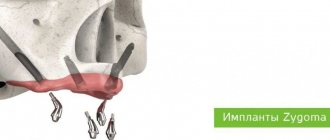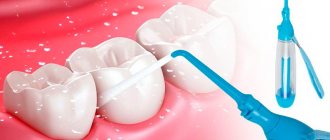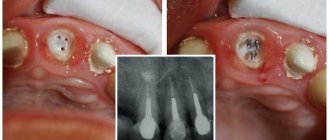Conditions for expensive treatment For whom you can get a deduction Amount of deduction and deadlines for submitting documents Expensive dentistry How to get a deduction for treatment Documents for deduction
To understand in detail what a tax deduction for treatment is, we suggest watching our video.
Using illustrative examples, we tell you who has the right to a deduction, what documents need to be collected for the tax office, for whom you can get a deduction, and how much money you can ultimately return to your account.
The fundamental difference between simple and expensive treatment is the size of the tax deduction. The article “Medical services, medications and expensive types of treatment for tax deduction” lists the types of treatment approved by Decree of the Government of the Russian Federation of April 8, 2020 No. 458.
In order to find out the type of treatment you need, it is not necessary to look for the disease in the long list of the Regulations. Ask the clinic where you were treated for a “Certificate of payment for medical services to be submitted to the tax authorities” and look at the line “service code”.
If the code is No. 1 , it means the treatment was simple. If code No. 2 - expensive.
In a separate article, we described in detail what the “Tax Deduction for Treatment” is. Below we will tell you how to determine whether the treatment was expensive, what this means, what benefits it brings and how to get part of the costs back.
Conditions for obtaining a tax deduction for expensive treatment
- you are a tax resident of the Russian Federation;
- pay income tax 13%;
- the medical institution is registered in Russia;
- the medical institution is licensed;
- prescriptions were prescribed by the attending physician;
- in the Medical Payment Certificate;
- you paid for services and consumables from your own funds, and did not receive them from your employer or from a charitable foundation;
- consumables, the cost of which you plan to include in the deduction, were paid for by you for expensive treatment;
- the clinic does not have the medications and consumables you need for expensive treatment;
- the purchase of medications and consumables at the patient’s expense is specified in the agreement with the medical institution;
- you have a certificate from the clinic stating that consumables were needed for expensive treatment.
The inclusion of expensive consumables in the tax deduction is discussed in clause 2.2 of the Federal Tax Service Letter of August 31, 2006 N SAE-6-04 / [email protected] “On certain issues of providing social tax deductions.”
List of expensive types of treatment for which a tax deduction is provided
According to Decree of the Government of the Russian Federation No. 201 of March 19, 2001, the following medical services are expensive and are taken into account in the tax deduction in full (without a limit of 120 thousand rubles) :
- Surgical treatment of congenital anomalies (developmental defects).
- Surgical treatment of severe forms of circulatory system diseases, including operations using artificial blood circulation machines, laser technologies and coronary angiography.
- Surgical treatment of severe forms of respiratory diseases.
- Surgical treatment of severe forms of diseases and combined pathologies of the eye and its appendages, including the use of endolaser technologies.
- Surgical treatment of severe forms of nervous system diseases, including microneurosurgical and endovasal interventions.
- Surgical treatment of complicated forms of diseases of the digestive system.
- Endoprosthetics and reconstructive operations on joints.
- Transplantation of organs (complex of organs), tissues and bone marrow.
- Replantation, implantation of prostheses, metal structures, pacemakers and electrodes.
- Reconstructive, plastic and reconstructive plastic surgeries.
- Therapeutic treatment of chromosomal disorders and hereditary diseases.
- Therapeutic treatment of malignant neoplasms of the thyroid gland and other endocrine glands, including the use of proton therapy.
- Therapeutic treatment of acute inflammatory polyneuropathies and complications of myasthenia gravis.
- Therapeutic treatment of systemic connective tissue lesions.
- Therapeutic treatment of severe forms of diseases of the circulatory, respiratory and digestive organs in children.
- Combined treatment of pancreatic diseases.
- Combined treatment of malignant neoplasms.
- Combined treatment of hereditary bleeding disorders and aplastic anemia.
- Combined treatment of osteomyelitis.
- Combined treatment of conditions associated with complicated pregnancy, childbirth and the postpartum period.
- Combined treatment of complicated forms of diabetes mellitus.
- Combined treatment of hereditary diseases.
- Combined treatment of severe forms of diseases and combined pathologies of the eye and its adnexa.
- Complex treatment of burns with a body surface area of 30 percent or more.
- Types of treatment associated with the use of hemo- and peritoneal dialysis.
- Nursing premature babies weighing up to 1.5 kg.
- Treatment of infertility using in vitro fertilization, cultivation and intrauterine embryo insertion.
For whom can you get a deduction?
A common situation is when one person in a family is treated, and the other pays for it. This often happens to elderly parents, because paying tens of thousands of rubles for joint surgery or therapy for a serious illness is an unbearable burden for a pensioner.
In Art. 219 of the Tax Code of the Russian Federation defines a list of relatives for whom you can receive a tax deduction if you paid for their treatment:
- husband wife;
- children under 18 years of age;
- parents.
If you are paying for yourself or for relatives from the above list, an agreement with the clinic can be concluded for any of you. The main condition is that there must be documentary evidence that it was you who incurred these expenses.
Is dental implantation an expensive treatment?
The cost of installing implants is affected by:
- Clinic category . In large dentistry with a large flow of patients, there is competition, so the cost of services may be lower than in small institutions. In Moscow and St. Petersburg, taxes and the cost of renting premises are higher, so prices for services are several times higher than in the provinces.
- Doctor's qualifications . Attending seminars and advanced training courses is expensive, so treatment from an experienced doctor will be more expensive. The availability of permits will also affect the cost. Registration and updating of documentation requires financial investments.
- Applied technology of implantation:
- classic in 2 stages;
- basal;
- express method;
- laser;
- mini-implantation.
In addition to the dental implant and superstructures, diagnostic procedures, consumables and repeated surgical interventions are paid for.
Deduction amount and deadlines for submitting documents
So, you have determined that you are entitled to a tax deduction and that the treatment was expensive. How much money can you get back?
For expensive treatment, unlike simple treatment, the upper tax deduction limit has not been determined. You have the right to a refund of 13% of all your expenses (subclause 3, clause 1, article 219 of the Tax Code of the Russian Federation).
You are allowed to contact the inspectorate and submit a 3-NDFL declaration with an application for a deduction at the end of the tax period, that is, next year after payment. The calculation takes into account the calendar year from January 1 to December 31.
If you paid for treatment in 2022, then documents must be submitted no earlier than 2022. The deduction can be received within three years from the date of payment, so in our example it is 2022, 2023 or 2024.
Remember! Regardless of how much money you spent on expensive treatment during the year, the refund amount cannot be more than the personal income tax you paid for that year. The remainder does not carry over to the next year and is burned.
Information on the amount of transferred income tax is contained in the 2-NDFL certificate from your work. This document, like other mandatory documents, is submitted to the Federal Tax Service at your place of residence.
Read more about how to get a tax deduction from Star Smile
All patients of the Star Smile clinic and partner clinics can receive a tax deduction. Upon request, employees will prepare an agreement, checks, a copy of the license for the right to provide medical services - that is, the entire package of documents for the tax authorities.
The contract will specify how much the braces or aligners themselves cost in total, and what costs the patient incurred when paying for doctor’s appointments.
Additionally, the patient will need a certificate of income paid in Form 2 of the personal income tax (it is taken from the current or former employer).
With these documents you need to contact the tax office at your place of residence or registration. There you will be asked to fill out form 3-NDFL and indicate the treatment code: 01 for simple and 02 for expensive. The specialists at the clinic will tell you which code you need.
The easiest way to fill out 3-NDFL is now in the taxpayer’s personal account on the website nalog.ru. If you have never registered there, contact the inspectorate with your passport and receive a password and login. This method of filing a declaration is much simpler than manually entering data on a paper form. After checking all attached documents within 1-3 months, the deduction amount will be sent to the specified details.
Expensive dentistry
The most popular question is what dental service is considered an expensive treatment? Is it possible to get a tax deduction for all expenses for prosthetics, braces or dental treatment?
Let's turn to the Decree of the Government of the Russian Federation of April 8, 2020 No. 458, which defines a list of expensive types of treatment.
It contains point 1:
Medical services for orthopedic treatment of the population with congenital and acquired defects of teeth, dentition, alveolar processes, jaws supported by dental implants in the absence of conditions for traditional dental prosthetics (significant atrophy or defects of the inert tissue of the jaws).
This is the only indication of a service that can be classified as dentistry. Or rather, to surgical dentistry for implantation of dentures.
Let's summarize: no matter how much money you spend on prosthetics, installation of braces or dental treatment, only the operation of implanting dentures is an expensive type of treatment . And only for it and for the implants you can get a tax deduction for the entire amount.
All other dental services are classified as simple treatment with code No. 1 with a maximum tax deduction of 120 thousand rubles and a payment of 15.6 thousand rubles (13% x 120 thousand rubles).
Remember that the amount of all social deductions, including treatment, cannot exceed 120 thousand rubles.
List of medical services for which a tax deduction is provided
According to Decree of the Government of the Russian Federation No. 201 of March 19, 2001, the following medical services can be taken into account in tax deductions:
- Diagnostic and treatment services when providing emergency medical care to the population.
- Services for diagnosis, prevention, treatment and medical rehabilitation in the provision of outpatient medical care to the population (including in day hospitals and by general (family) practitioners), including medical examination.
- Services for diagnosis, prevention, treatment and medical rehabilitation when providing inpatient medical care to the population (including in day hospitals), including medical examination.
- Services for diagnosis, prevention, treatment and medical rehabilitation when providing medical care to the population in sanatorium and resort institutions.
- Health education services provided to the public.
How to get a deduction for treatment
The process of applying for a tax deduction for expensive treatment is no different from the general rules. The main thing is attentiveness, scrupulous collection of documents and correct filling out of the 3-NDFL declaration.
On the one hand, nothing complicated. On the other hand, even a minor mistake can lead to you having to start all over again. Considering that tax authorities take three months for a desk audit, incorrectly completed documents will stop the process and you will waste time.
What will you get if you register in the online service NDFLka.ru:
- We will compile for you a list of documents you need;
- We will check the correctness of the design;
- We will fill out the 3-NDFL declaration for you or help you do it yourself;
- We will send you two electronic formats of 3-NDFL: XML and PDF, so that it is convenient for you to submit the declaration to the Federal Tax Service;
- or we will send 3-NDFL to the tax office ourselves using your electronic signature;
- We will be in touch until you receive the money in your bank account.
Average cost in Moscow
| Name | Cost, rub. |
| Turnkey implantation | |
| Classic with installation of a metal-ceramic crown | 40000 |
| Classic with installation of a zirconium crown | 55000 |
| Implant supported dentures | |
| Removable for one jaw | 100900 |
| Clasp 2-sided | 180000 |
| Other operations | |
| Implantation of osteoconductive material in the area of 1 tooth | 9600 |
| Protective membrane 1 tooth | 12700 |
The amount of tax deduction for the costs of prosthetics and implantation of dentures
Another question that we are also asked quite often:
How much can I get a social tax deduction for the costs of dental prosthetics and implantation of dentures?
Different government agencies give opposite answers to this question:
- The Ministry of Health and Social Development of Russia, in its Letter No. 26949/MZ-14 dated November 7, 2006, considers that such an operation is included in the List of expensive types of treatment (item 9 of the List), therefore a medical institution is lawful to issue a certificate for submission to the tax authorities indicating service code 2 when carrying out the specified operation.
- The Federal Tax Service of Russia, in Letter No. 04-2-05/7 dated December 25, 2006, has a different opinion. According to the Federal Tax Service of Russia, a taxpayer cannot receive a social tax deduction for dentures as an expensive treatment in the amount of actual costs, but will be able to receive a social tax deduction for treatment in an amount not exceeding the maximum amount (120,000 rubles) for the tax period. The Federal Tax Service explains its position by saying:
- The list is exhaustive and is not subject to expanded interpretation;
- Dental prosthetics as one of the types of expensive treatment is not included in this List,
therefore, the taxpayer does not have the right to claim a social tax deduction for expensive types of treatment.
In such a situation, some consultants appeal to the following arguments:
- in the certificate of payment for medical services (form approved by Order of the Ministry of Health of Russia and the Ministry of Taxes of Russia dated July 25, 2001 No. 289/BG-3-04/256), the document records the type of treatment - ordinary or expensive. A regular service has a code of 1, and an expensive one has a code of 2;
- the assignment of a specific type of treatment to those provided for in the Lists of medical services and expensive types of treatment is currently the prerogative of the Russian Ministry of Health, and before it was decided by the Russian Ministry of Health and Social Development,
Therefore, they come to the conclusion that the taxpayer has the right to claim a deduction in the amount of expenses actually incurred.
In our opinion, it is necessary to proceed from the position of the Federal Tax Service, which is authorized to provide explanations in the field of taxes and fees. Also, to date we are not aware of a single case of providing a social deduction for dental implantation and prosthetics in the amount of expenses incurred (if anyone has such a practice, please let us know).
Information posted in 2008. Added - 12/15/2014, 01/29/2019, 04/09/2020.
Useful links on the topic “New list of expensive types of treatment for obtaining a social tax deduction 04/08/2020 No. 458”:
- Errors when filling out tax return 3-NDFL
- List of medicines prescribed by the attending physician to the taxpayer and purchased by him at his own expense, the cost of which is taken into account when determining the amount of social tax deduction
- Detailed instructions on how to correctly fill out a tax return and receive social and property deductions
- Sample of filling out the 3-NDFL tax return for 2022:
- title page, sections 1, 2
- income from sources in the Russian Federation (Appendix 1);
- calculation of property tax deduction for expenses on the purchase of real estate (Appendix 7)
- calculation of property tax deductions for income from the sale of property (Appendix 6);
- calculation of social tax deductions established by subparagraphs 4 and 5 of paragraph 1 of Article 219 of the Tax Code (calculation to Appendix 5);
- calculation of standard, social, investment tax deductions (Appendix 5);










